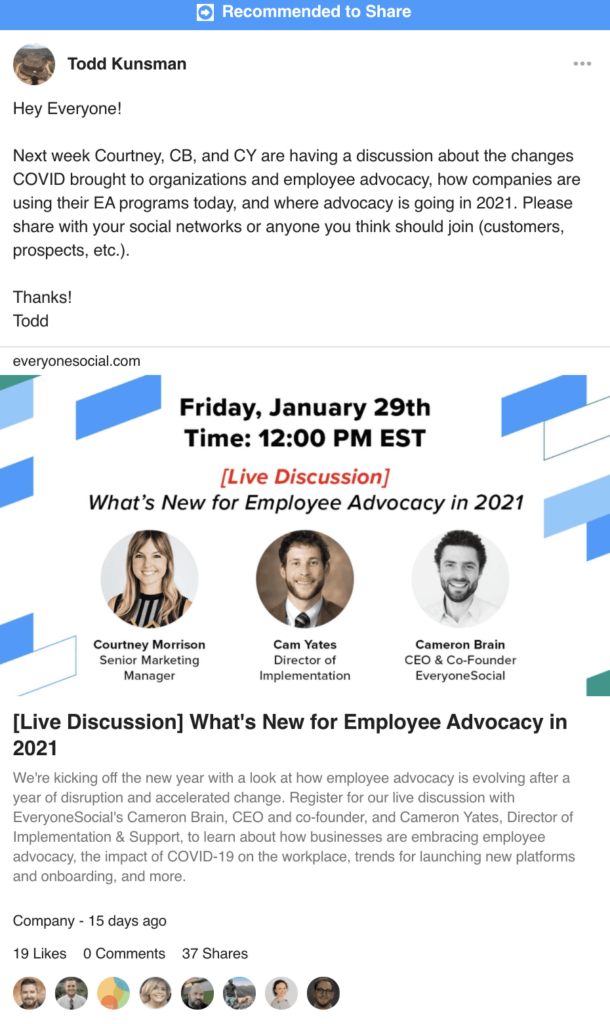Successful companies are strategic with the way they communicate. In fact, developing a corporate communications plan can be one of the most important ways to build a stronger brand.
Trust is created by the ways that businesses share authentically about themselves and how they respond to difficult situations.
Communications teams benefit from putting a lot of effort into the way they craft messaging and tell stories about their brand. And those that are most equipped to handle challenges and adapt to change are the ones that have plans in place.
A 2019 study showed that 96% of people think the businesses they deal with could improve when it comes to communication and project management. So clearly this is something more businesses need to address!
Let’s explore what successful corporate communications plans include and have in common, and how they can benefit your organization.
What is a Corporate Communications Plan?
A corporate communications plan is the framework for how a business shares messages internally and externally. You can think of it as the roadmap for how a company communicates with their stakeholders, employees, customers, the media, and regulators.
Part of the plan includes what information to share, who the target audience is, how frequently to provide updates, and what channels are the best to relay these messages.
Having a plan in place shapes how a company will handle communications during times of crisis, change, and launches of campaigns and new products.
What Are the Types of Corporate Communications?
The two main types of corporate communications are:
Internal Communications: How a business shares information with its employees, leadership teams, managers, and board members.
The interactions can be formal modes of communications such as all-hands meetings to discuss strategic initiatives and performance, updates about organizational changes, company newsletters, and internal memos about policy changes.
Or they can also include more informal communication like using messaging apps to collaborate, welcoming new hires, celebrating work anniversaries, or sharing details on winning new business.
External Communications: Any information shared outside of the organization.
Whether it is a formal press release or branded content on social media, these communications build the company’s public image and impact the perception of a brand and its products or services.
Marketing, content, and advertising created by the company to promote it are included as external communication methods.
Press releases and financial reporting are another way that companies share messaging about the organization with the outside world.
Why is Having a Corporate Communications Plan Important?
Corporate communications plans lead to sharing clearer and better messages with your target audience.
Whether that audience includes your own employees or potential customers, you want to be heard in the right place and at the right time. Setting up a framework to achieve that is essential.
Sometimes you might be thrown a curveball, and a communications plan will help your business be prepared for any unexpected changes or crises that come your way.
Surprisingly, a JOTW Communications Survey showed that 59% of communicators say they have a communications strategy drafted, but only 45% admit to having a documented crisis communications plan.
Having a plan in place will also allow for speedier recovery to any public relations issues. For example, responding to negative feedback and being open about mistakes can build trust with your brand and get you back on the right track in the eyes of customers and potential clients.
Communicating effectively and transparently shows that your brand values engagement by taking a proactive approach to be included in conversations about your brand or industry.
A corporate communications plan for internal communications will also help define and build a transparent company culture. This can improve employee engagement by keeping team members included in conversations about where the company is heading and what it values.
If there are sudden changes on a team, you’ll be better able to communicate the changes in a way that makes employees feel comfortable and cared for if you have a plan for how to share that information first for those immediately affected and then across the company.
What Should A Corporate Communications Plan Include?
It takes time and consideration to develop an effective corporate communications plan. You’ll want to include details for the objectives, approach, and tracking measures for the goals of your messaging.
In simple terms, you’ll want to include the who, what, when, where, why, and how.
Here are the elements your corporate communications plan needs:
- Target Audiences – these are the groups of stakeholders that will be receiving the messages. They could be employees, customers, media members, investors, leadership teams, and managers. Age, location, job level, interests, and lifestyle are all helpful to know about the receivers of your messaging.
- Objectives – most communications are created with a call to action or a desired outcome in mind — these are your ultimate objectives or goals. They should be tied to your overall organizational goals to drive business outcomes.
- Message content – what you want to say and what you are trying to help your readers understand. Tone and personality are important to formulate in your message to get your reader’s attention.
- Distribution strategy – the channels and venues that your communications will be delivered on are an important aspect of the communications plan. Paid, earned, owned, and shared media channels have different benefits for reaching audiences.
- Frequency – how often you will be sharing or updating content to reach your target audience. This will depend on your team’s budget and resources, as well as an understanding of your target audience and being mindful of attention fatigue.
- Measures of evaluation – how you’ll know if your communications were successful. These should be highly attached to your objectives and goals so that you can track progress and understand areas for improvement.
How to Create a Corporate Communications Plan
You can follow these steps to design a corporate communications plan that is thorough and takes into account the many facets that go into a successful communications strategy.
1. Establish goals
Pick 3-5 measurable goals for your communication plan. They could be connected to brand awareness like increasing website traffic or generated a certain number of new leads.
Or they could be related to employee engagement, such as increasing the employee satisfaction score on your next survey or increasing the number of shares of branded content.
2. Set a clear process
Knowing the steps involved to launch a communications campaign and having teams on board with the process will ensure that your plan is scalable.
Document the steps involved from content creation to distribution to collecting feedback and share those with any teams that are included in the action.
You should also define clear roles for who will be involved in creating the communications and which stakeholders need to be involved for approving messages and compliance.
3. Identify and segment targets
Take time to think through who your target audience will be and how they may be different. Knowing your audiences can help you tailor your content and tone to appeal to audiences.
Use customer analysis and social listening to determine your audience’s preferred social channels and the best forms of content to encourage visibility of your content.
The way your company shares information with employees will likely be different than how it presents to the board or investors so it’s important to segment your audiences.
4. Develop key messages
Craft the copy and creative materials needed to effectively communicate your messaging. Think about what you are trying to articulate and how it could be conveyed in the clearest and understandable way for your target audience.
The content-type should also be considered — should the message be shared in a meeting or email or video? How can the audience react and ask questions about the announcement? These are all questions to consider when creating the content for both internal and external communications.
5. Choose a channel strategy
You’ll need to determine the channels and frequency of your communications to meet your goals.
For example, if your communication strategy is for internal communications you’ll evaluate whether an email or meeting is the best way to share the news.
Do teams prefer shorter, weekly updates or to get more information at the end of the month? Get feedback from your audiences to determine what makes the most sense for your communication cadence.
6. Measure objectives and progress
Before you start implementing your plan, think through how you can measure success for your communications with metrics like reach, open rates, and engagement.
That way you will be set up to continuously improve your content strategy and messaging.
Collect feedback from employees or customers on how to improve your messaging and enact these changes so that you are don’t run the risk of turning off or disengaging your audience.
Want expertly crafted content to help refine your marketing, social selling, and recruiting strategies? Sign up for our newsletter and get a copy of our Personal Brand Starter Kit. 👇
What are the Main Channels for Corporate Communications?
Companies have many software platforms and tools to choose from that can help streamline communications. You’ll want to use a mix of communication channels to achieve different goals.
For external communications, social networks, media publications, and videoconferencing are some of the most effective ways to reach potential customers and grow brand awareness.
All of the content that you publish on your website reflects the values and goals of your brand and can be a powerful way to make connections by providing valuable resources to potential buyers.
For internal project communication, email and messaging apps are the easiest ways for people to collaborate at an organization. They make it easy to share files and resources, get input from colleagues, and track project status updates.
Internal blogs, company newsletters, and intranets are some examples of methods that companies have used to keep employees informed and connected.
For building company culture and employee engagement, internal enterprise social networking platforms provide a more flexible and easy to use way to share company content.
Employee advocacy for corporate communications
Employee advocacy platforms like EveryoneSocial make it easy to link to external social networks, bridging the gap between internal company conversations and sharing them externally to strengthen brand engagement.
Press releases are important tools for sharing announcements and launching new products. And those efforts can be amplified when you have employees that want to share that content to their own networks, as well.
Beyond externally distributing communication messages, EveryoneSocial has unique features that keep your people engaged, connected, and informed — no matter where they are working.
For example, some features for communications include:
- Internal newsletters
- Push notifications
- Mobile apps
- Real-time messaging
- Follow company employees
- Tag employees on important info
- Read-only content
















